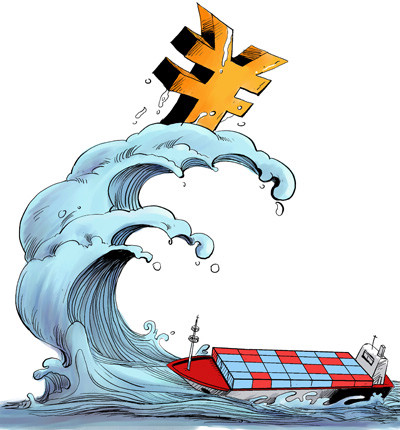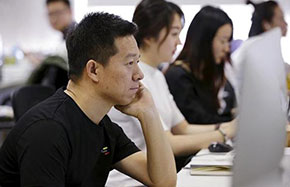Higher yuan hurts

The first thing Dong Yuejun does after arriving at the office is to check the latest currency exchanges rates.
"Exchange rate fluctuation of the yuan means uncertain costs. This is the most important thing for export merchants," said Dong, an electric equipment exporter in Ningbo, east China's Zhejiang province.
The yuan's accelerated appreciation began on April 1 this year, strengthening to a record high of 6.1867 against the US dollar on May 24, up from 6.2674. In addition, the yuan has risen 1.6 percent against the dollar since the start of 2013, higher than its 1-percent gain last year.
But the Ministry of Commerce warned that a rising yuan could have a serious impact on Chinese exporters, leaving many to wonder where a rising yuan fits into the overall picture of China's economic growth.
Severe impact
"The more dollars you make, the bigger losses you suffer," said Fu Changguang, a clothing exporter in Hefei, capital of east China's Anhui province, when talking about the recent surge in the value of the yuan. In the past six months, a stronger yuan was the straw that broke the camel's back for his business. "Rising labor and material costs, sluggish demand and intense price competition have made my profit margin paper-thin, and the rising yuan has eaten up the meager profits I've made," Fu said.
"Due to its low profit margin and high reliance on exports, the textile industry became the first to bear the brunt of yuan appreciation," said Tang Shuangshuang, an analyst with Huachuang Securities. According to Tang, a 1-percent appreciation of the yuan will cause profits to erode in the industry by 1-4 percent. Even big companies cannot escape its impact. Lutai Textile Co Ltd, an export-oriented company based in east China's Shandong province, reported its first annual business decline last year since it's being listed on the stock market in 2000. "Exchange rate fluctuations had a negative impact on export revenue," read the company's 2012 annual report.
The textile sector was not the only one hit by a stronger yuan. "My friend who exports enamelware had a profit margin of only 2 percent. New orders decreased by more than 50 percent this year," said Fu.
"The current rising yuan has put many export-oriented Chinese companies under escalating pressure," said Tan Yaling, Director of the China Forex Investment Research Institute.
"The yuan's recent appreciation casts an alarming pall on the profits of China's exporters," said Shen Danyang, a MOFCOM spokesperson. "Many exporters are now afraid of taking more orders because of a lack of confidence in the future of their businesses. And exporters' profits have been squeezed to a very low margin. Many small and medium-sized exporters are scrambling to survive."
The yuan isn't only appreciating against the US dollar. Data show that the yuan has edged up 19 percent against the Japanese yen and 2.6 percent against the euro since the first trading day of the year.
China's exports to Europe in April declined 6.5 percent to $25.9 billion. Trade with some European countries suffered even bigger declines. Germany's imports of Chinese goods fell 7.2 percent and France's by 6.7 percent. Exports to the United States edged down slightly to $28.1 billion.



















